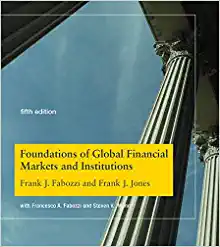







.., kindly solve
Amanda's utility function is Leontief and given by Wa(Xarya) = min(xa. yal while Brenda's utility is linear and given by us(xb. )b) = XD + VD Their endowments are wa = (2,3) and wo = (4, 1). Show this economy in an Edgeworth Box Show the Individually Rational allocations and show in Edgeworth Box Find the Pareto Efficient allocations for this economy and show in the Edgeworth Box. Show the core of the economy. Find the Walrasian Equilibrium of the economy and show in your Edgeworth box. Prove directly that the First Welfare Theorem holds Does the Second Welfare Theorem hold for allocation ((3,3)a, (3,1),}? If so how?Consumer 2 has endowment w? = (4, 8) and utility function U2(x) = 23 +4V/x]. (a) Find all Pareto efficient allocations where both consumers consume strictly positive amounts of good 1 and good 2. (b) Argue that any feasible allocation r = (r), r?) where r? = 16 and 12 0}. 4. Sampling model: {Y/},_, is an independent sample, sequentially generated using Y, = x;B+ Uji = 1, . ..,n, where the U, are a IID(0, 02). 1.1 Theoretical Part Let X be the n x k matrix of regressors, and let Y be the n x 1 vector of the dependent variable. 1. Compute BLS by minimizing (Y - XB)" (Y - XB), where B E RK. 2. Prove that BLS B, V(B, 0) ERk x R+ 3. Prove that vn (BLS - B) is asymptotically distributed as multivariate normal with zero mean, and report the asymptotic covariance matrix. Hint: The multivariate version of the\f1.2 Simulation Part Let k = 3 where X = [1, X1, X2] with regression parameters given by (8o, B1, 82), respectively. Suppose we wish to test the hypothesis that one parameter is equal to the reciprocal of the other: Ho : g" ( B1, B2) = B1 - 1/B2 = 0. (1) An alternative form to the above hypothesis which is algebraically equivalent under the null hy- pothesis is Ho : 95 (81, B2) = B1B2 - 1 = 0. (2) 1. Calculate the Wald statistic for each of the above forms of restriction that defines the null hypothesis. Are these statistics identical ? 2. In the simulation exercise we will compare the relative performance of the two Wald statis- tics. Consider the following DGPs in Ho with X, and X2 obtained using4. Consider the linear regression equation common in econometrics: y = bo + bix, + b2x2 +e. The OLS Solution is a vector B = (XX)-1XY where X= [1, X1, X2], matrix composed of N dimensional vectors: 1= ones, x, = observations on first variable, and X2 = observations on second variable. Y is a N dimensional vector of observations on the dependent variable. From the matrix algebra sum and cross products will result. They are provided below for N=10 observations: Ey = 20 Ex1 = 30 Ex, = 40 Ey? = 88.2 Ex = 92 Ex = 163 Eyx1 = 59 Zyx2 = 88 Ex1X2 = 119 a. Setup the sums and cross products on matrix form for computing B. b. Compute necessary inverse for computing B. c. Compute the vector






















